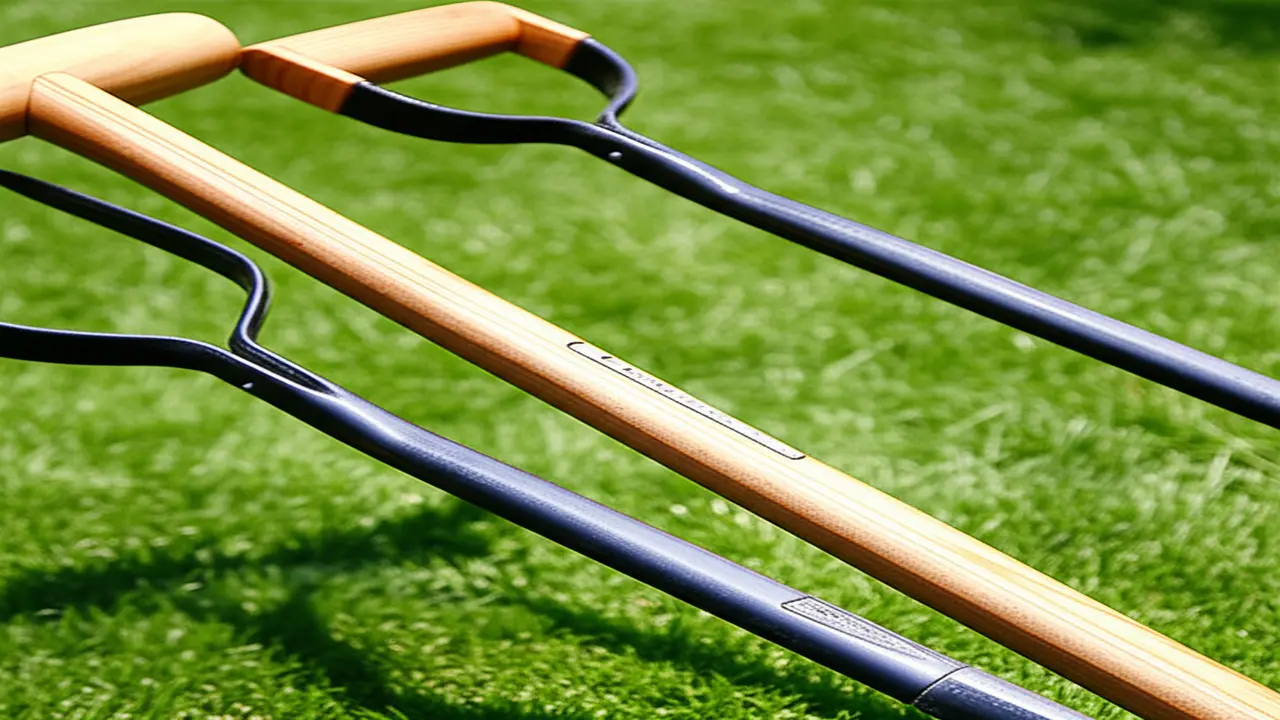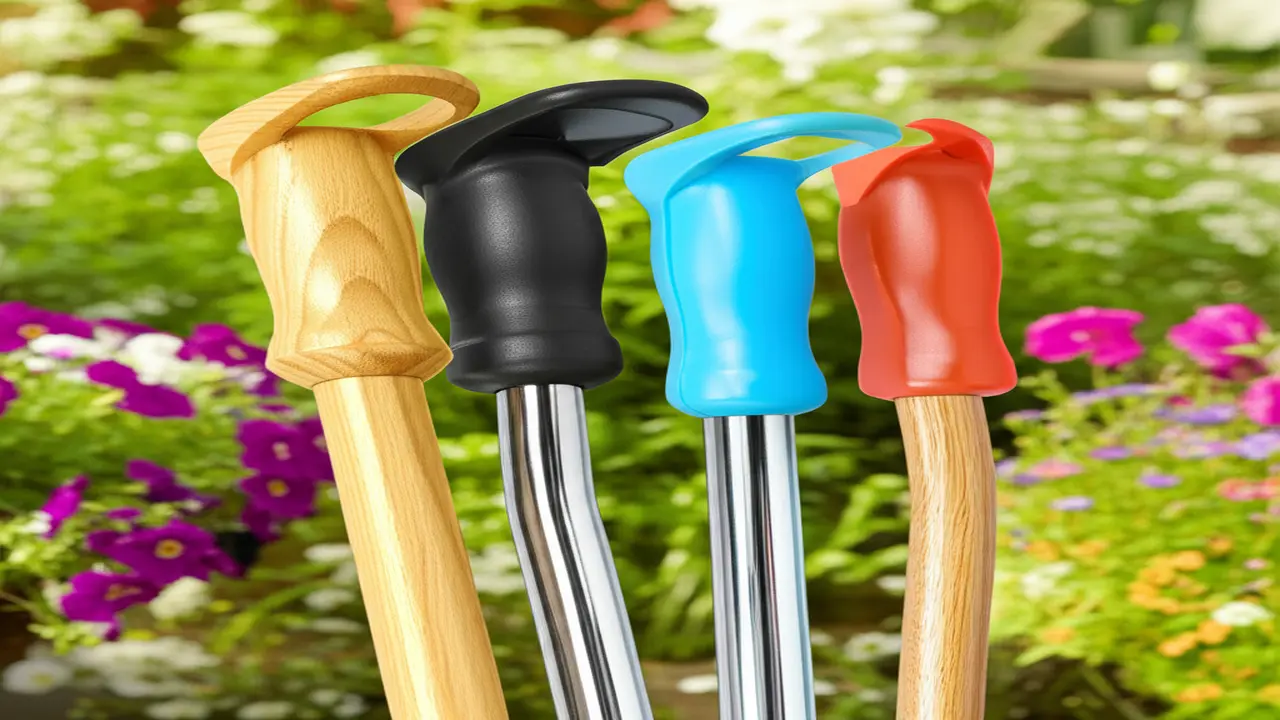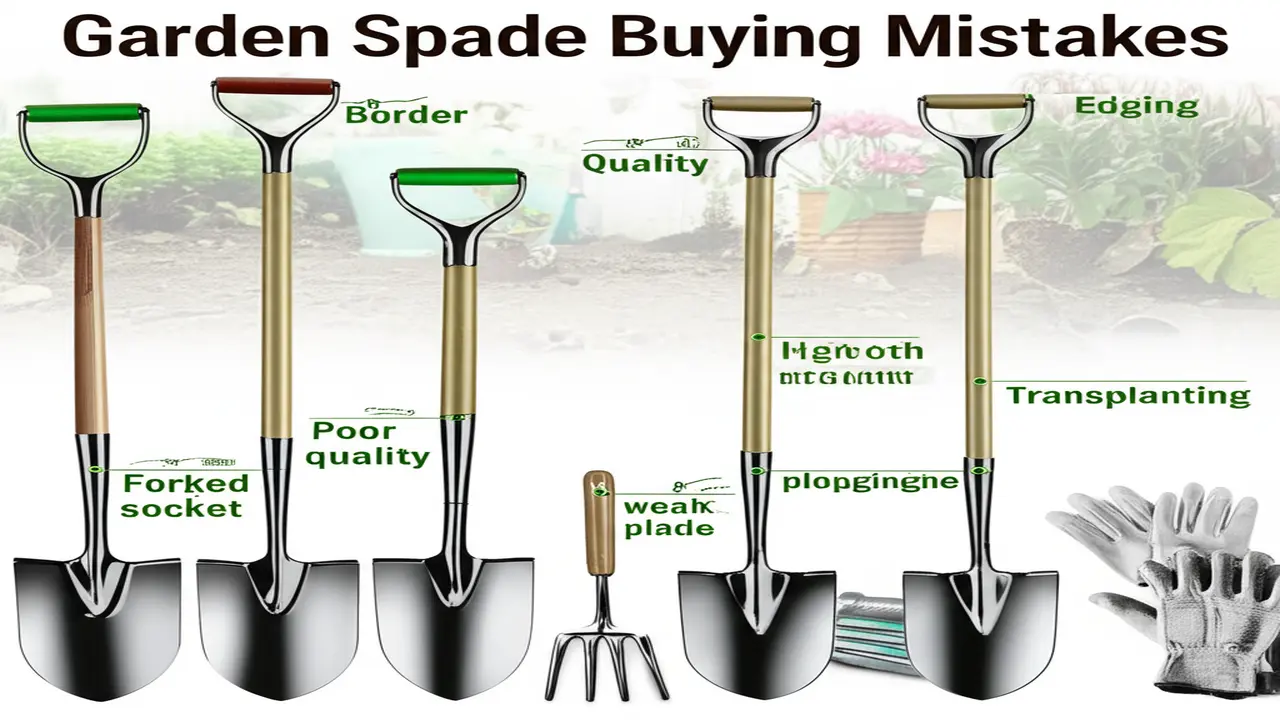When it comes to gardening, the garden fork is an essential tool, often taken for granted beyond its functional tines. However, the handle of a garden fork is just as vital, influencing your comfort, efficiency, and safety as you work the soil. Choosing the right garden fork handle types can reduce strain, improve control and leverage, and suit a variety of gardening tasks. This detailed guide will explore handle types, materials, ergonomic tips, and maintenance advice so you can select the best handle for your gardening needs.
Thank you for reading this post, don't forget to subscribe!I. The Unsung Hero of Your Garden Fork – Its Handle
A garden fork’s handle isn’t merely a stick attached to the tines; it’s a critical component that gives you leverage and comfort. The handle affects how much effort you exert, the precision of your work, and how long you can comfortably garden without fatigue or injury. For example, a poorly fitting handle can contribute to wrist strain or backaches, while the right handle enhances your control and efficiency.
Understanding the different types of garden fork handles, their materials, and how ergonomic features come into play will empower you to make an informed choice tailored to your physical stature and gardening style.
II. Decoding Garden Fork Handle Types: Form, Function, and Feel
Garden fork handles come in several classic shapes, each designed for specific functions and user preferences. Knowing these will help you decide the best fit for your gardening tasks.
A. The D-Handle (Closed-Grip)
The D-handle features an enclosed loop at the top, typically allowing space for two hands. This design provides excellent leverage, making it ideal for heavy digging, lifting dense soil, aerating, or working in confined areas such as raised beds and garden borders. It offers two-handed control, which aids in pushing the fork into tough earth and provides a comfortable grip for users of average to short height.

However, the D-handle can feel restrictive for taller users or when deep reach is necessary. It also may not accommodate pulling or levering actions as naturally as other types. Variations include adjustments in grip diameter, angles, and loop sizes to better suit user needs.
B. The T-Handle (Open-Grip)
The T-handle is a straightforward design with a horizontal cross-piece at the shaft’s end, allowing for open, varied grip positions. It’s well suited for lighter garden chores such as weeding, cultivating, turning compost, or any task that demands swift repositioning of the tool.
This handle type favors single-handed use and offers a traditional garden tool feel. Its simplicity makes it good for delicate, precise work in looser soils.
Nonetheless, the leverage on a T-handle is less powerful, which can lead to wrist fatigue if used intensively. It doesn’t provide as secure a grip during forceful pushing compared to the D-handle and can strain wrists if overloaded. Widths and thicknesses vary, providing some customization.
C. The Long/Straight Handle (Staff/Shaft Handle)
Characterized by a straight shaft with minimal or no grip at the end, the long handle offers flexibility in hand placement and is favored by tall gardeners or when deep digging or aerating large areas. It maximizes leverage, allowing users to work with reduced fatigue and better posture, as hand positions can be adjusted along the shaft.
However, long handles lack the precision of closed or T-handles, making them less ideal for fine tasks. They require good technique to avoid back or arm strain, especially during lifting or pulling.
D. Ergonomic/Specialty Handles
Innovative handle designs, often with angles, curves, or padding, seek to enhance comfort and reduce stress on joints by improving wrist alignment and absorbing shock. These are practical for users with joint issues or those who prioritize ergonomic comfort over traditional tool aesthetics.
Examples include offset handles that straighten wrist posture and cushioned grips that soften vibrations. Considering these options can be worthwhile if you spend long hours gardening or have specific physical needs.
III. Garden Fork Handle Materials: Durability, Feel, and Maintenance
The material of the handle impacts its weight, feel, lifespan, and care requirements. Here’s a closer look at popular garden fork handle materials and their respective qualities.
A. Wood (Ash, Hickory, Beech)
Wood handles offer a traditional and natural feel with excellent shock absorption, reducing vibrations while working. Preferred woods like ash are valued for their long, straight grain and impressive strength-to-weight ratio. Wood handles tend to be comfortable in all weather conditions, neither too cold in winter nor too hot in summer.
Maintenance is essential to prolong wood handles’ life — regular oiling with linseed oil prevents drying and splitting. Without care, wood can rot or splinter under severe conditions.
B. Fiberglass
Fiberglass handles are durable, lightweight, and resistant to weathering, making them an excellent low-maintenance option. They don’t splinter and offer good vibration damping, though they may lack some of the natural comfort of wood on hard impacts.
This synthetic composite can be more costly but offers long-lasting performance even with minimal upkeep.
C. Steel/Metal
Steel handles, often tubular with plastic coatings, provide unmatched strength and rigidity. They integrate seamlessly with the fork head for toughness ideal for heavy-duty tasks. However, steel handles are the heaviest and can become uncomfortable in temperature extremes, with minimal shock absorption and possible rusting if not properly treated.
D. Composite/Plastic
Lighter synthetic options are common for casual use. They’re inexpensive and weather-resistant but typically less durable under heavy strain and may become brittle over time. They suit light gardening or ergonomic designs where minimal weight is critical.

IV. Key Ergonomic and Design Considerations for Handle Choice
When selecting your garden fork handle, ergonomics play a crucial role as they directly affect comfort and injury prevention.
A. Handle Length Matching User Height
Optimal handle length encourages good posture, reducing back strain. Generally, taller users benefit from longer handles allowing an upright stance, whereas average or shorter users find D-handles or short T-handles easier to manage without bending excessively.
B. Grip Comfort and Diameter
A handle’s grip should fit comfortably in your hand, preventing blisters and fatigue. Look for padded grips, anti-slip textures, and appropriately sized diameters that suit your hand size for secure control.
C. Tool Balance
Handle material and design influence overall tool weight distribution. A well-balanced fork reduces exertion and improves maneuverability, helping you make the most of each garden task.
D. Connection to the Fork Head
Handles are joined to tines usually by sockets or tangs with rivets, screws, or epoxy. Socketed wooden handles are often replaceable, while integrated steel shafts tend to be permanent and very durable.
V. Choosing the Right Garden Fork Handle for Your Needs
Here’s a strategic approach based on tasks, user profile, and preferences.
A. Match Handle Type and Material to Gardening Tasks
- Heavy digging or lifting favors sturdy D-handles combined with tough materials like fiberglass or steel.
- Cultivating, weeding, or compost turning pairs well with T-handles made from lighter wood or fiberglass for agility.
- Aerating large beds and tall gardeners benefit from a long straight handle to reach deeply and maintain comfort.
B. Consider Your Height and Physical Condition
For shorter or average height gardeners, the D-handle or a short T-handle best promotes comfort. Taller gardeners may find long straight handles or longer-shafted D-handles help maintain proper posture.
If you have wrist, joint, or back issues, prioritize ergonomic handles with padded grips and lightweight materials.
C. Decide on Personal Preference and Feel
Traditionalists might prefer wooden handles for their aesthetic and natural touch, whereas others may choose modern fiberglass or steel for durability and low maintenance. Grip style preferences also come into play between closed D-handles, open T-handles, or versatile straight handles.
D. Assess Durability, Maintenance, and Budget
Fiberglass and steel handles typically offer longevity with minimal upkeep, while wood requires ongoing oiling and care but provides the classic touch. Budget choices generally lean toward composite or wood, with fiberglass and steel often priced higher but offering long-term value.
For further exploration, see our related content on ergonomic garden tools for comfort-enhancing equipment recommendations.
VI. Caring for Your Garden Fork Handle: Longevity Tips
Maintaining your garden fork handle ensures years of efficient, comfortable use.
After each gardening session, thoroughly clean the handle by removing dirt and grime to prevent moisture retention that can degrade materials. Store your fork in a dry place away from direct sunlight and extreme temperatures, which can warp wood or degrade plastics.
For wooden handles specifically, regular application of linseed oil or similar oils prevents drying and cracking. Sand any splinters or rough patches gently to avoid injury. Routinely inspect the handle for cracks, splits, or looseness, and repair or replace if necessary to maintain safety and functionality.
VII. Conclusion: Your Garden Fork, Your Comfort
Choosing the perfect garden fork handle is more than a practical decision—it’s an investment in your gardening pleasure and health. Understanding handle types, materials, and ergonomic features helps you select a tool tailored to your stature, physical needs, and gardening duties.
Whether it’s the firm leverage of a D-handle, the nimble T-handle, or the adaptable long straight handle, each offers distinct advantages. Material choice balances traditional comfort against modern durability and care demands. Proper care will extend your tool’s life and maintain its performance.
Ultimately, the best handle is one that feels right in your hands and supports your gardening style. By taking the time to choose thoughtfully, you empower yourself to work smarter, safer, and more comfortably—enhancing every moment spent in your garden.
For comprehensive garden tool reviews and detailed buying guides, visit Garden Item Reviews. For ergonomic gardening principles, check authoritative insights at Fine Gardening and comprehensive garden fork usage tips at The Spruce.

